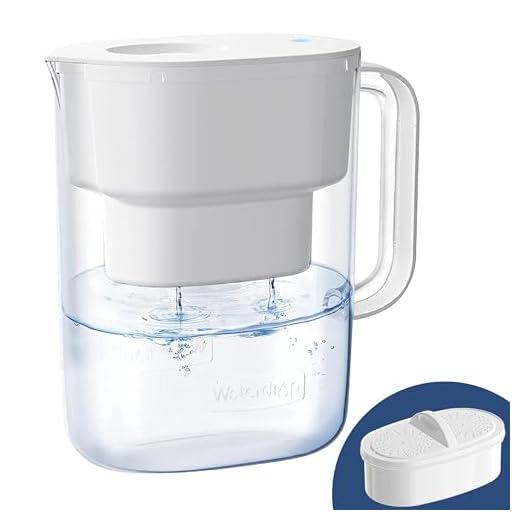




Consumer Preferences Over the Decades
Over the decades, consumer preferences regarding water filtration have evolved significantly, reflecting broader trends in health consciousness and convenience. In the early years, traditional under-sink filters dominated the market, largely due to their permanency and the perceived reliability they offered. Many homeowners favored these systems for their ability to seamlessly blend into kitchen designs while providing a more stable filtering solution.
However, as awareness about water quality issues grew, so did interest in the flexibility and ease of use provided by countertop filters. These systems offered a portable and less invasive option that appealed to renters and those seeking a budget-friendly alternative. The rise of social media and digital marketing also played a crucial role in promoting countertop solutions as trendy and modern, encouraging younger consumers to gravitate towards them in favor of older, established methods.
Shifts from Traditional to Modern Solutions
Over the years, water filtration solutions have evolved significantly. Traditional systems primarily focused on simple methods, such as activated carbon pitchers and faucet attachments. Consumers sought convenience without giving much thought to advanced technologies. However, rising awareness of water quality issues prompted a shift toward more effective filtration methods.
The introduction of under-sink filtration systems marked a turning point in the industry. These systems offered an inconspicuous installation while providing advanced filtration capabilities. The growing interest in healthier lifestyles increased demand for modern solutions that delivered purified water on demand. Innovations such as reverse osmosis and multi-stage filtering systems became increasingly popular among consumers.
Environmental Considerations
The rising awareness of environmental issues has significantly influenced the water filtration market. Consumers are increasingly concerned about plastic waste and the ecological impact of disposable water bottles. This awareness has driven a demand for filtration systems that reduce reliance on single-use plastics, prompting manufacturers to explore sustainable designs and materials.
Moreover, the energy consumption levels of water filtration systems play a crucial role in their environmental assessment. Countertop units tend to have a lower energy footprint compared to more complex systems, while under-sink filters may require more resources for installation and maintenance. Customers are now looking for solutions that not only purify water effectively but also align with eco-friendly practices.
The Push for Sustainable Filtration Options
Growing awareness of environmental issues has led to a significant shift in consumer preferences towards sustainable filtration options. Many people now seek products that not only improve water quality but also minimize ecological impact. Companies have started to respond by developing filters made from recyclable materials and reducing plastic waste in packaging. Innovations include the creation of cartridges that can be replaced without disposing of the entire unit, which aligns with consumer demands for more environmentally friendly practices.
Certification bodies have begun to emphasize sustainability alongside traditional performance metrics. This focus has resulted in a rise in products that boast not just efficiency in filtering contaminants but also a lower carbon footprint. Many manufacturers are now committed to using energy-efficient processes in production and promoting long-lasting filters that reduce the frequency of replacements. As the market evolves, consumers increasingly expect transparency regarding production practices and the environmental impact of their chosen filtration systems.
Comparing Effectiveness
Water filtration methods vary significantly in effectiveness, largely depending on the technology employed. Countertop filters typically utilize a combination of activated carbon and additional filtration stages to remove contaminants, leading to improved taste and smell. Specific models are known for eliminating particulates and certain chemicals, though performance can differ based on the system’s age and filter status.
Under-sink systems often incorporate more advanced technologies, including reverse osmosis or multi-stage filtration processes. These methods can target a broader range of impurities, which may include heavy metals and microorganisms. Due to their installation behind cabinets, under-sink systems often have larger capacities and longer filter life, which contributes to their efficacy in ensuring consistently purified water. However, they may require more maintenance and periodic checks to ensure optimal performance.
Testing and Certification Standards
Testing and certification standards play a crucial role in the effectiveness and safety of water filtration systems. Various organizations, such as the National Sanitation Foundation (NSF) and the Water Quality Association (WQA), provide third-party testing and certification for water filters. These standards ensure that products meet specific performance criteria, including the removal of contaminants and overall filtration efficacy. Consumers often rely on these certifications to make informed choices, understanding that products bearing recognized labels have undergone rigorous testing.
Different filtration technologies may be subject to distinct testing protocols depending on their design and intended use. For instance, countertop systems might be evaluated for the removal of sediments and chlorine, while under-sink systems may face additional scrutiny concerning the reduction of heavy metals. Consequently, the certification process helps establish trust in the product’s ability to deliver clean and safe drinking water. As consumer awareness of water quality increases, the importance of these standards in shaping purchase decisions becomes even more pronounced.
FAQS
What are the main differences between countertop and under-sink water filters?
Countertop water filters are typically portable and easy to install, sitting directly on the counter, while under-sink filters are permanent installations hidden under the sink and often provide a more comprehensive filtration system.
How have consumer preferences changed over the decades regarding water filters?
Over the decades, consumers have shifted from traditional water filtration methods to modern solutions that emphasize convenience, efficiency, and advanced filtration technologies, reflecting an increasing demand for quality and ease of use.
What environmental considerations influence the choice between countertop and under-sink water filters?
Many consumers now consider the environmental impact of their water filters, favoring options that reduce plastic waste and use sustainable materials, contributing to the push for more eco-friendly filtration solutions.
Are countertop water filters as effective as under-sink filters?
Effectiveness can vary by model, but under-sink filters generally offer more extensive filtration capabilities. However, many countertop filters are also highly effective, especially those that meet testing and certification standards.
What are the testing and certification standards for water filters?
Water filters are often evaluated and certified by organizations such as NSF International and the Water Quality Association, which ensure that products meet specific performance standards for contaminant reduction and overall safety.
Related Links
7 Reasons to Opt for Under-Sink Water Filters
Why Under-Sink Filters Are Ideal for Permanent Installations
